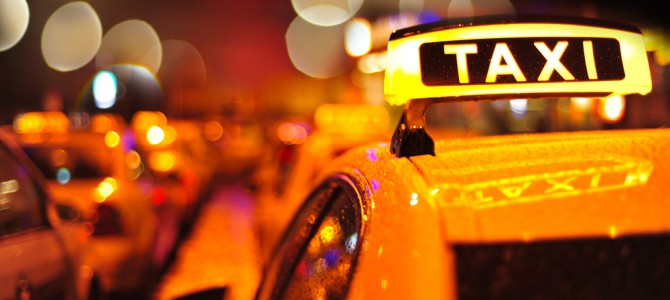
Following a recent education policy conference, we shared a ride back to the airport. Hailing the driver via the Uber app, we could see his name, face, and rating; we could track his approach on the app’s map, and we paid the fare automatically through the app at ride’s end. In other words, getting to the airport was about as convenient and easy as possible, this side of teleportation. And it cost half a standard taxi fare.
Yet, despite providing a better-quality experience at a lower cost, Uber has had to fight for its very existence. Even as we waited for our driver to arrive, the concierge made it evident that the hotel’s primary relationship was with taxi drivers, and that we should wait on our Uber over there.
This happens when you upset an entrenched monopoly. Across the country, taxi drivers are demanding that the government regulate or even ban Uber and similar ridesharing services. Some cities, like Los Angeles, have banned lower-cost ridesharing services from picking up passengers at the airport, a key source of income for the traditional taxi companies.
Curtailing Monopolies Means More Satisfaction at Less Cost
That’s unfortunate not only for ride-seekers, but also for drivers. A recent Washington Post report suggested some reasons for Uber’s growth. Compared to traditional taxi drivers, Uber drivers earn more (up to $30 per hour in New York). They also set their own hours and aren’t subject to the whims of dispatchers. The same technology that let us track our driver’s progress toward pick-up allows Uber chauffeurs to find their customers more efficiently.
The two can even rate one another. The Uber app allows a rider to rate the driver’s service, and importantly, drivers even leave star ratings of their passengers, who are not wont to let a rating drop, for fear it will make their next pick-up request difficult.
Innovation has enabled Uber to create a better experience for both consumer and provider. And nowhere is that kind of innovation more desperately needed than in our K-12 education system. An Uber-ization of education—something that is already beginning to happen—will improve service for students and teachers. Take the example of teacher-led schools.
To Improve, Set People Free to Experiment
In a January 16 Washington Post column, David Osborne wrote that some 70 schools across the country are now “teacher-led” schools. Teachers evaluate one another (and parents and students, in turn, evaluate teachers). Teacher-led committees make personnel and other school management decisions. Many of these schools engage primarily in project-based learning, which lets students direct their studies more autonomously, while teachers oversee and mentor student projects to successful completion.
This teacher-led model appears to create higher levels of teacher retention and satisfaction. Moreover, students appear to outperform their peers on measures such as going on to college. Unsurprisingly, most of these schools are charter schools, which face fewer regulations and have more flexibility than traditional public schools.
Before the advent of Uber (and similar upstarts like Lyft), competition between taxi companies occurred only within the rigid structure of bureaucratic taxi fiefdoms. Uber brought competition of a new kind: competition on the delivery model of transportation services, enabling riders to match drivers effortlessly, and allowing drivers to decide whether to return the favor by picking up a prospective rider.
Some Call It ‘Unbundling Education’
Similarly, dozens of states and localities have made significant strides in expanding choice and competition over the last decade. Charter-school enrollment has tripled in a decade to more than 2.5 million, and the number of states with private-school choice, such as vouchers or scholarship tax credit laws, has grown from six in 2004 to 18 states plus Washington DC and Douglas Country, Colorado today. Education savings accounts, currently available in Arizona and Florida, represent the next generation of school choice. Like the iPhone’s iOS or Google’s Android, ESAs provide a platform that allows greater innovation and customization.
In Arizona and Florida, parents who opt their children out of their assigned public schools can have 90 percent of what the state would have spent on them in the public system deposited directly onto a restricted-use debit card. Parents can use that money to pay for private school tuition, textbooks and curricula, private tutors, special education therapies, assistive technology, and a host of other education-related services and products. They can even roll-over unused funds from year-to-year or save unspent money in a college savings account. In other words, they can completely customize their child’s educational experience.
Public education currently operates far more like a monopoly than a market. In response to Uber, wise government officials like those in Portsmouth, New Hampshire are eliminating outdated regulations like taxi medallions and price controls. If we want to see more innovative educational options that benefit both consumers and providers, such as teacher-led schools, then we must also liberate learning.








